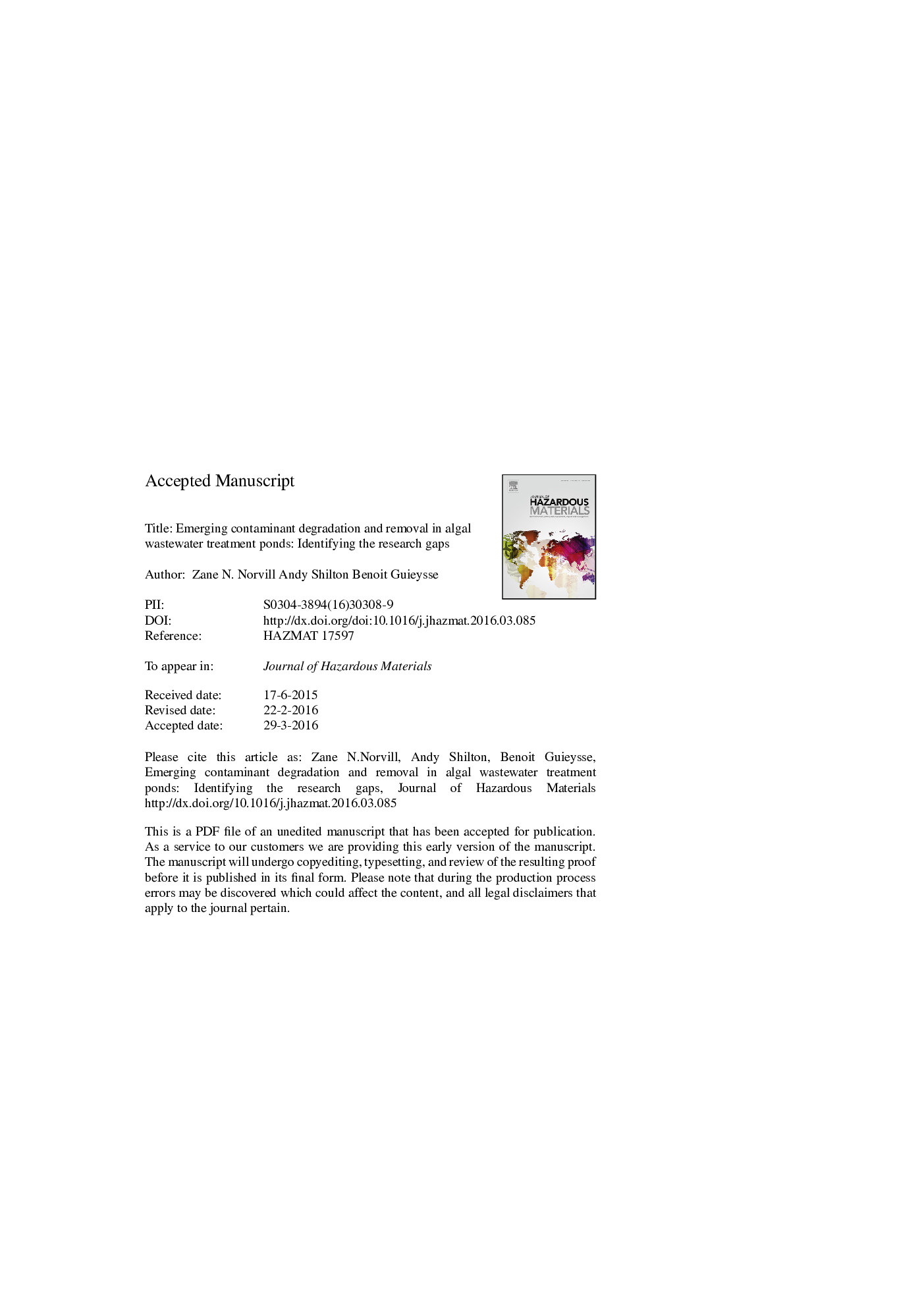| Article ID | Journal | Published Year | Pages | File Type |
|---|---|---|---|---|
| 575272 | Journal of Hazardous Materials | 2016 | 79 Pages |
Abstract
Whereas the fate of emerging contaminants (ECs) during 'conventional' and 'advanced' wastewater treatment (WWT) has been intensively studied, little research has been conducted on the algal WWT ponds commonly used in provincial areas. The long retention times and large surface areas exposed to light potentially allow more opportunities for EC removal to occur, but experimental evidence is lacking to enable definite predictions about EC fate across different algal WWT systems. This study reviews the mechanisms of EC hydrolysis, sorption, biodegradation, and photodegradation, applying available knowledge to the case of algal WWT. From this basis the review identifies three main areas that need more research due to the unique environmental and ecological conditions occurring in algal WWT ponds: i) the effect of diurnally fluctuating pH and dissolved oxygen upon removal mechanisms; ii) the influence of algae and algal biomass on biodegradation and sorption under relevant conditions; and iii) the significance of EC photodegradation in the presence of dissolved and suspended materials. Because of the high concentration of dissolved organics typically found in algal WWT ponds, most EC photodegradation likely occurs via indirect mechanisms rather than direct photolysis in these systems.
Related Topics
Physical Sciences and Engineering
Chemical Engineering
Chemical Health and Safety
Authors
Zane N. Norvill, Andy Shilton, Benoit Guieysse,
